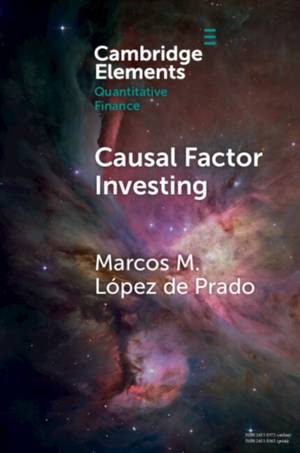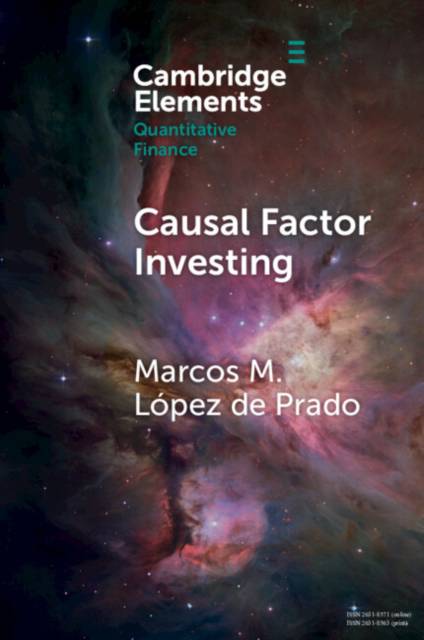
- Afhalen na 1 uur in een winkel met voorraad
- Gratis thuislevering in België vanaf € 30
- Ruim aanbod met 7 miljoen producten
- Afhalen na 1 uur in een winkel met voorraad
- Gratis thuislevering in België vanaf € 30
- Ruim aanbod met 7 miljoen producten
Zoeken
€ 33,45
+ 66 punten
Omschrijving
Virtually all journal articles in the factor investing literature make associational claims, in denial of the causal content of factor models. Authors do not identify the causal graph consistent with the observed phenomenon, they justify their chosen model specification in terms of correlations, and they do not propose experiments for falsifying causal mechanisms. Absent a causal theory, their findings are likely false, due to rampant backtest overfitting and incorrect specification choices. This Element differentiates between type-A and type-B spurious claims, and explains how both types prevent factor investing from advancing beyond its current phenomenological stage. It analyzes the current state of causal confusion in the factor investing literature, and proposes solutions with the potential to transform factor investing into a truly scientific discipline. This title is also available as Open Access on Cambridge Core.
Specificaties
Betrokkenen
- Auteur(s):
- Uitgeverij:
Inhoud
- Aantal bladzijden:
- 92
- Taal:
- Engels
- Reeks:
Eigenschappen
- Productcode (EAN):
- 9781009397292
- Verschijningsdatum:
- 9/11/2023
- Uitvoering:
- Paperback
- Formaat:
- Trade paperback (VS)
- Afmetingen:
- 152 mm x 229 mm
- Gewicht:
- 136 g

Alleen bij Standaard Boekhandel
+ 66 punten op je klantenkaart van Standaard Boekhandel
Beoordelingen
We publiceren alleen reviews die voldoen aan de voorwaarden voor reviews. Bekijk onze voorwaarden voor reviews.








